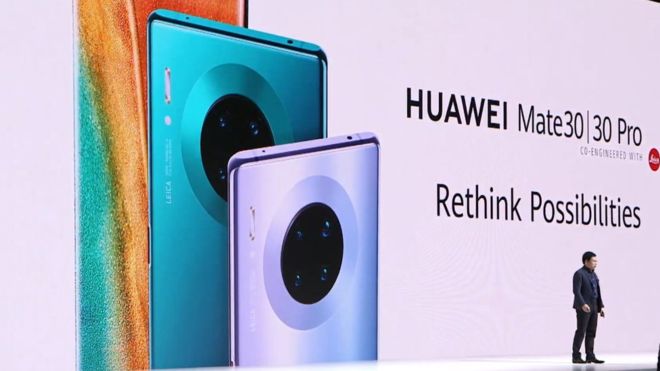Huawei Beats Apple To Reach No. 2 Smartphone Spot

Huawei second only to Samsung for full-year 2019 sales, in spite of US ban, while iPhone 11 boosts Apple to lead in fourth quarter
Huawei overtook Apple to become the second biggest smartphone maker of 2019, in spite of formidable trade barriers.
Huawei was second only to Samsung in full-year 2019 sales, with Apple coming in third, said Counterpoint Research.
It’s the first time the Shenzhen, China-based telecommunications equipment giant has beated Apple in full-year sales.
The gains came in spite of the US’ move in May of last year to place Huawei on its national security “entity list”, which means newer Huawei phones can’t offer Google services or access to the Play Store.

Sales ban
The ban also affects Huawei’s ability to purchase other software, hardware and services made in the US.
The lack of Google services sharply limits the Huawei devices’ appeal outside of China.
However, China alone made up 60 percent of Huawei’s revenues, and a strong marketing push helped the company gain nearly 40 percent market share in the country.
In 2017 Huawei overtook Apple in sales for the months of June and July, and it also outsold Apple in the second quarter of 2018, but this is the first time it has beaten the iPhone maker on full-year sales.
Prior to the entity list ban Huawei had been expected to challenge Samsung for the top spot last year, according to Strategy Analytics.

Image credit: Samsung
Strong Apple sales
Apple was, however, the top smartphone seller in the fourth quarter, beating out both Samsung and Huawei, driven by the iPhone 11’s lower pricing.
Samsung maintained its top spot for the year, with Xiaomi and Oppo rounding out the top five, analysts said.
The coming year sees ongoing political and economic uncertainties, including the threat to supply chains posed by the current coronavirus outbreak, Counterpoint noted.
“2020 will likely see efforts to further diversify investments across geographies to mitigate risks,” said Counterpoint analyst Tarun Pathak.
5G on the way
The company noted that the emergence of 5G last year allowed smartphone makers to gain attention by releasing industry-first 5G-capable devices.
It predicted 5G smartphones would grow to account for around 18 percent of total global smartphone shipments this year, up from 1 percent in 2019.
Counterpoint noted that the smartphone market is gradually consolidating, with the top five manufacturers holding 66 percent of the market, compared to 65 percent in 2018 and 62 percent in 2017.
Counterpoint and Strategy Analytics both found that total smartphone sales for 2019 declined by about 1 percent.
But Counterpoint noted that the decline was lower than the 4 percent sales drop in 2018, and noted that the fourth quarter of 2019 actually saw a sales increase of 3 percent year-on-year, possibly indicating a market recovery.